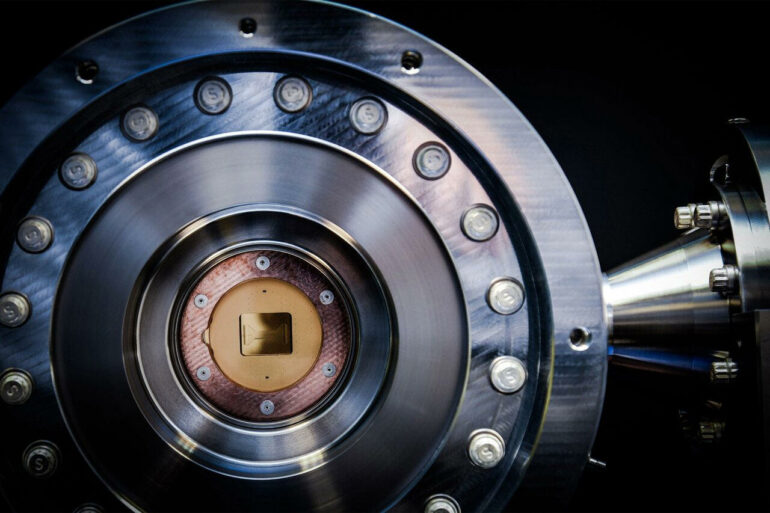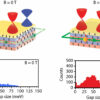by Anne J. Manning, Harvard Gazette
Our physical, 3D world consists of just two types of particles: bosons, which include light and the famous Higgs boson; and fermions—the protons, neutrons, and electrons that comprise all the “stuff,” present company included.
Theoretical physicists like Ashvin Vishwanath, Harvard’s George Vasmer Leverett Professor of Physics, don’t like to limit themselves to just our world, though. In a 2D setting, for instance, all kinds of new particles and states of matter would become possible.
Vishwanath’s team used a powerful machine called a quantum processor to make, for the first time, a brand-new phase of matter called non-Abelian topological order. Previously recognized in theory only, the team demonstrated synthesis and control of exotic particles called non-Abelian anyons, which are neither bosons nor fermions, but something in between.
Their results are published in Nature in collaboration with researchers at the quantum computing company Quantinuum. Vishwanath’s team included former Harvard Kenneth C. Griffin Graduate School of Arts and Sciences student Nat Tantivasadakarn ’22, now at Caltech, and postdoctoral fellow Ruben Verresen.
Non-Abelian anyons, known to physicists as quasi-particles, are only mathematically possible in a 2D plane. The qualifier “quasi” refers to the fact that they are not exactly particles, but rather long-lived excitations through a specific phase of matter—think ocean waves—and they have special memory-carrying capabilities.
Besides the fact that creating a new phase of matter is exciting fundamental physics, non-Abelian anyons have been widely recognized as a potential platform for quantum computing—which infuses the research achievement with even more significance.
Non-Abelian anyons are inherently stable, unlike the flimsy and error-prone quantum bits, or qubits, on other quantum computing platforms. They can “remember” their pasts as they move around one another—like a magician shuffling cups with hidden balls. This property is also what makes them topological, or able to be bent and twisted without losing their core identity.
For all these reasons, non-Abelian anyons might someday make ideal qubits—units of computational power that extend well beyond the classical computers of today—if they can be created and controlled at larger scales.
“One very promising route to stable quantum computing is to use these kinds of exotic states of matter as the effective quantum bits and to do quantum computation with them,” Tantivasadakarn said. “Then you have mitigated to a large extent the issues with noise.”
The researchers employed some dogged creativity to realize their exotic matter state. Maxing out the capabilities of Quantinuum’s newest H2 processor, the team started with a lattice of 27 trapped ions. They used partial, targeted measurements to sequentially increase the complexity of their quantum system, effectively ending up with an engineered quantum wave function with the exact properties and characteristics of the particles they were after.
“Measurement is the most mysterious aspect of quantum mechanics, leading to famous paradoxes like Schrödinger’s cat and numerous philosophical debates,” Vishwanath said. “Here we used measurements as a tool to sculpt the quantum state of interest.”
As a theorist, Vishwanath cherishes the ability to bounce between different ideas and applications of physics without being tethered to one platform or technology. But in the context of this work, he marvels at getting to not just explore a theory, but actually demonstrate it, particularly as the field of quantum mechanics enters its 100th year.
“At least for me, it was just amazing that it all works, and that we can do something very concrete,” Vishwanath said. “It really connects many different aspects of physics over the years, from foundational quantum mechanics to more recent ideas of these new kinds of particles.”
More information:
Mohsin Iqbal et al, Non-Abelian topological order and anyons on a trapped-ion processor, Nature (2024). DOI: 10.1038/s41586-023-06934-4
Provided by
Harvard Gazette
This story is published courtesy of the Harvard Gazette, Harvard University’s official newspaper. For additional university news, visit Harvard.edu.
Citation:
A new phase of matter: Physicists achieve first demonstration of non-Abelian anyons in a quantum processor (2024, February 21)



